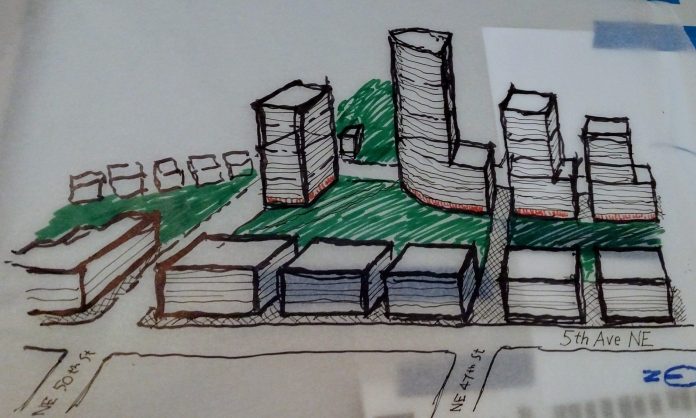Lid I-5 hosted a charrette on September 16th dedicated to sketching out a design for a freeway lid on the stretch of Interstate 5 that separates Wallingford and the University District. Breaking into five teams, participants brainstormed and drew up designs to realize that freeway lid. The results demonstrated how much potential lidding I-5 can unlock, and how the University District is a particularly good fit.
I-5 is in a trench as it crosses through the University District and that presents a big opportunity for a lid effort. A lid could be built across the trench with much less expense than if more grading were necessary. The opportunity is even large because a tangle of on- and off-ramps consumes several more city blocks that can be freed to host large buildings. Directly atop a lid more modest structures are usually more appropriate since reinforcing the lid can be quite expensive for heavier buildings. That said, cross-laminated timber technology could make building on top of lids more economical and feasible due to its lighter weight respective to concrete or steel.
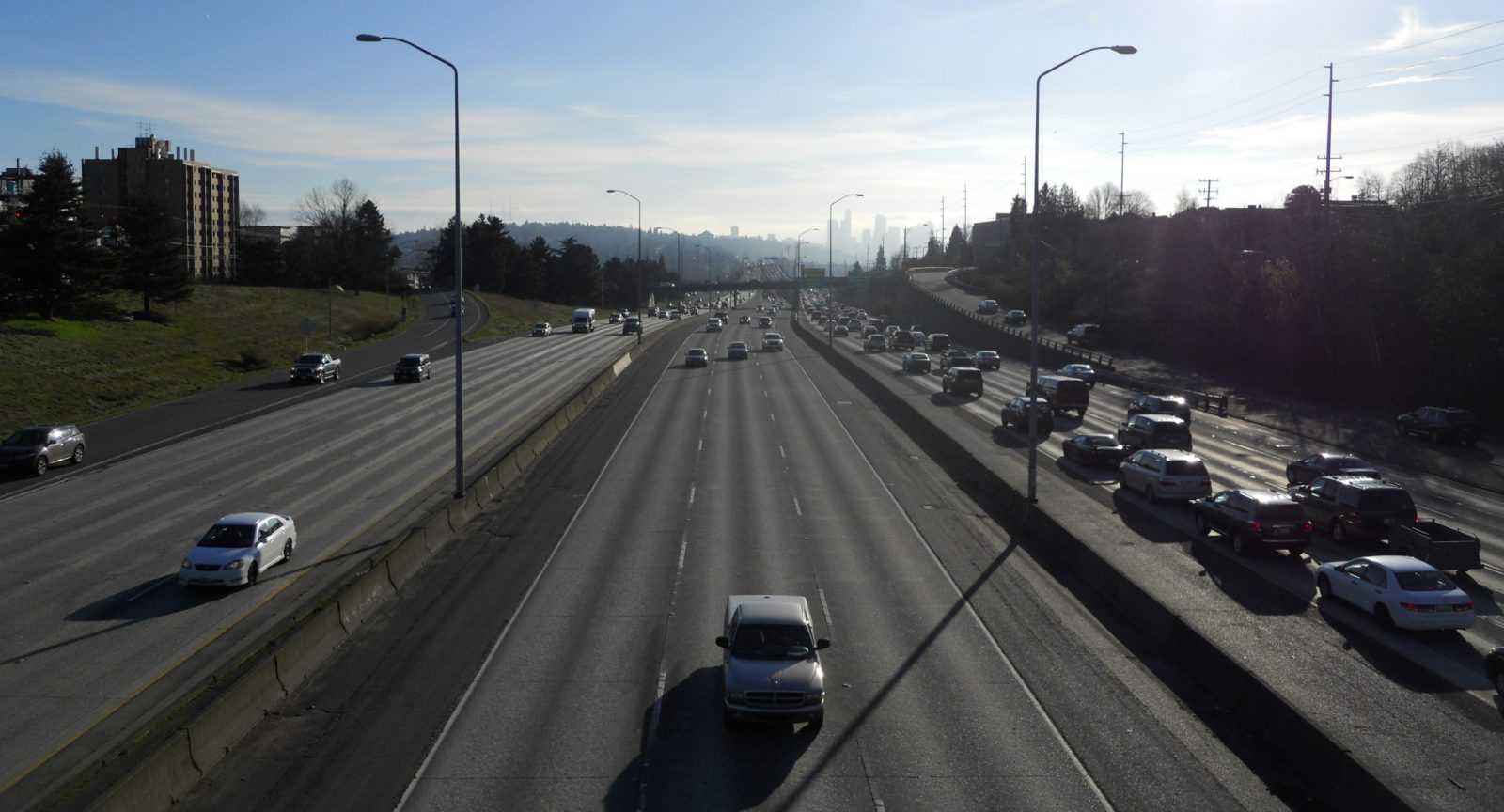
The team I was on, which was led by table captains Sarah Bonser and Jonathan Winslow, agreed that park space was a priority for the lid effort, and we used much of the lid space actually on top of the freeway for a park. This would provide a linear park the length of the nine-block-long lid from NE 43rd St to NE 52nd St. We imagined green space cutting over to University Playfield between NE 48th St and NE 50th St to create a continuous connection and unite the two park spaces. We removed on- and off-ramps between NE 45th St and NE 50th St to unlock some parcels with real development potential. We also envisioned some cross-laminated timber apartments partially atop the lid.
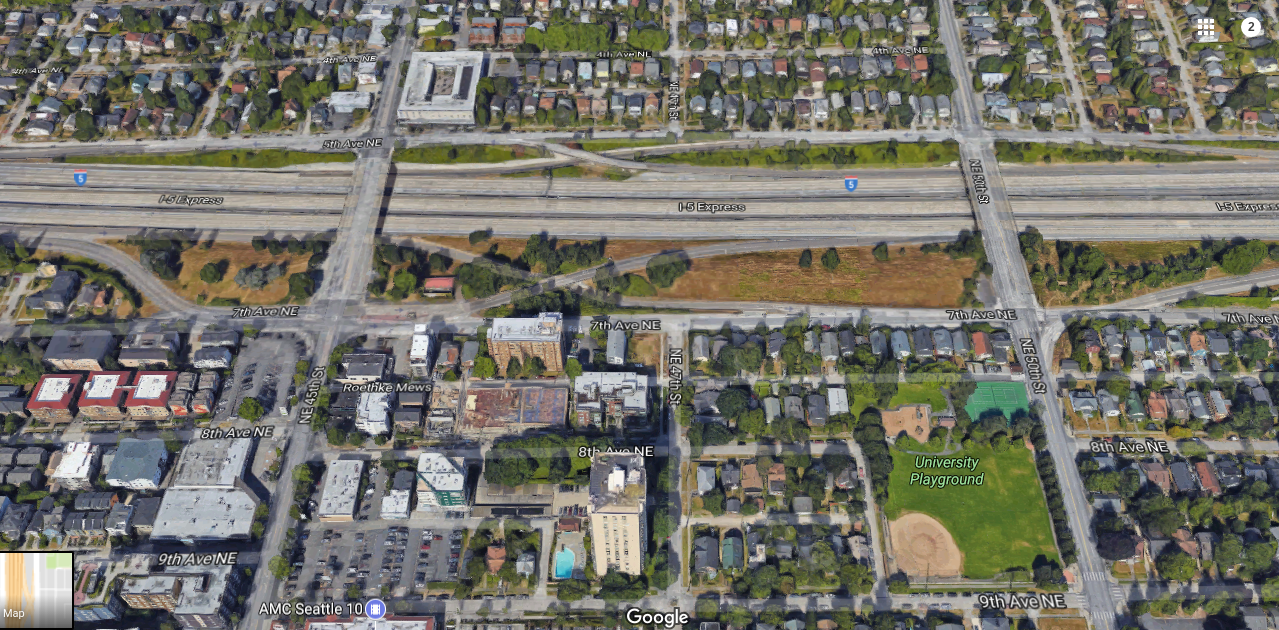
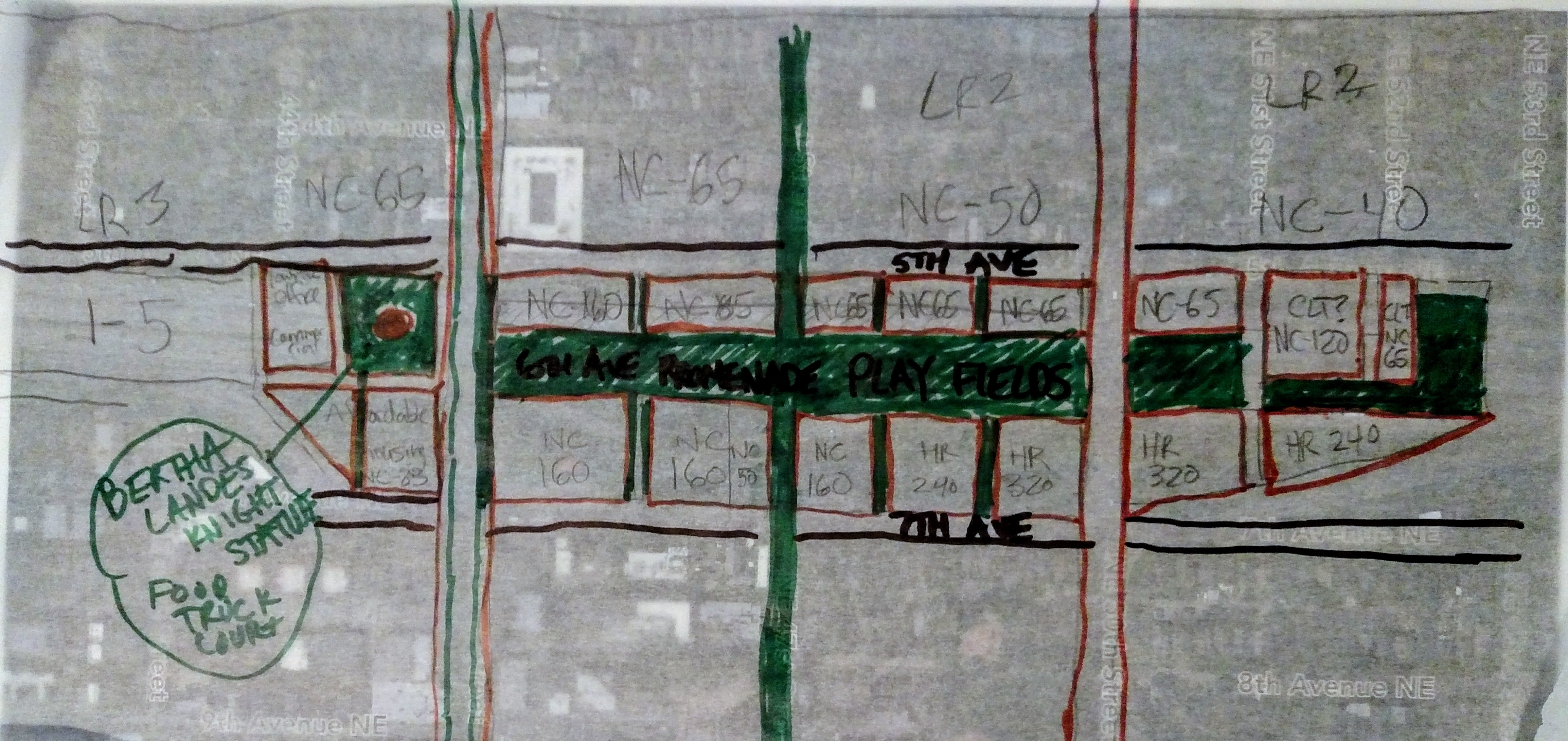
Upgrading Transportation Connectivity
A lid could massively improve transportation between Wallingford and the University District. We envisioned N 47th St being upgraded from a future greenway conceptually to a real full-fledged people-centered street with great bike and pedestrian access I-5 on the new lid. A lid could also assist in making the 45th St corridor more pedestrian-friendly and improving bus operations. Route 44 is slotted to receive RapidRide upgrades in 2022. If the RapidRide design ends up lacking dedicated transit lanes, a lid could provide the means and the catalyst to do so.
Financing the Lid
Some people–such as Cary Moon during her mayoral campaign–have expressed reservations about proposed freeway lids continuing a pattern of investment in Downtown and North Seattle while neglecting Southeast Seattle. Equitably distributing transportation investment is a very worthy policy, but, under certain circumstances, the right lid could finance itself. Southeast Seattle also lacks a comparable situation of a freeway being in a trench right next to an urban center as the University District offers. The lid would help the University District and east Wallingford take on more growth while easing development pressure on Southeast Seattle, relatively speaking anyway.
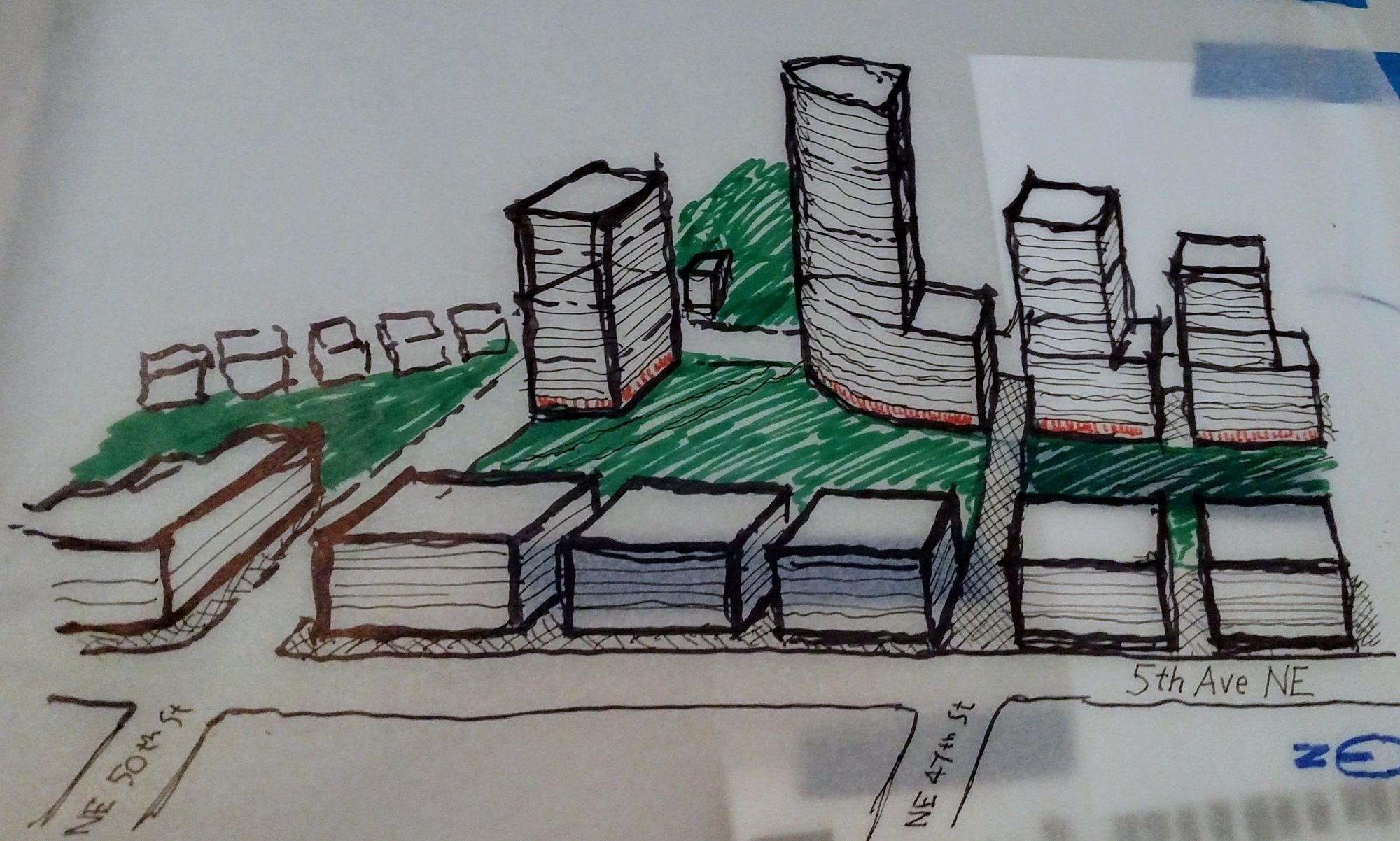
While the lid could include plenty of park space, several blocks worth of developable land could be freed. Some of this land would host deeply affordable housing in our vision. But some parcels could be sold at a profit. Turning the reclaimed land and surrounding blocks into a local improvement district could provide another revenue stream. Land values are likely to increase significantly once the nuisance of I-5 is removed from the equation. An upzone, which should definitely be part of the plan given the opportunity a lid unlocks, would further increase land values and provide further opportunity to use land value capture techniques to provide another revenue stream either for the lid itself or the amenities that are to go on top. Impact fees are one way to do that. And the City’s existing MHA framework would capture some land value and distribute it as affordable units or in-lieu fee payments. If anything qualifies for a M2 upzone, it’s seizing highrise or midrise land out of a freeway wasteland.
Finishing Touches
Replacing a noisy freeway trench is improvement all itself, but a University District lid should also include placemaking flourishes to make the park and multi-use paths places people want to linger and enjoy themselves. One idea our group threw out there was to erect a statue of Bertha Knight Landes in order to reclaim Seattle’s first female mayor from the indignity of being the namesake of the tunnel-boring machine (TBM) that drilled the four-billion-dollar SR-99 tunnel underneath Downtown–at least after an epic meltdown and multiyear delay. We wagered Knight Landes would rather be remembered for a freeway reclamation project rather than a boondoggle. If we can find it lying around, we figured the base of the statue could be a cross section of the giant TBM. We imagined the statue rising from the south end of the lid with the skyline of Seattle rising in the background. Food trucks would gather in a space to the north near what will soon by a busy cut-though to the University District light rail station.
We anchored our design with a statue of Bertha Knight Landes atop a tunnel boring machine at south end of the #LidI5 park. #ReclaimBertha pic.twitter.com/yxwwnD6O3F
— The Urbanist (@UrbanistOrg) September 17, 2017
It could really be an amazing space rising from an ugly nether region–all while putting thousands of homes near our state’s largest university which is only growing larger in size and housing needs.
Doug Trumm is publisher of The Urbanist. An Urbanist writer since 2015, he dreams of pedestrian streets, bus lanes, and a mass-timber building spree to end our housing crisis. He graduated from the Evans School of Public Policy and Governance at the University of Washington in 2019. He lives in Seattle's Fremont neighborhood and loves to explore the city by foot and by bike.

